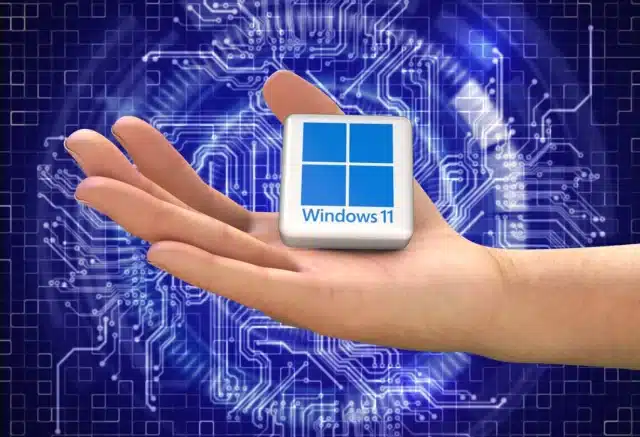Running Windows 11 22H2? Microsoft has the bug-bashing, brightness-fixing KB5028254 update for you

As part of this month's batch of update previews, we've already seen the KB5028245 update for Windows 11 21H2. For those who are running the more recent Windows 11 22H2, however, there is now the KB5028254 update.
There are many, many similarities between the KB5028245 and KB5028254 updates, and this should come as little surprise. The cumulative update for Windows 11 22H2 does have differences, though, including boosting the accuracy of brightness settings.
See also:
- Microsoft releases new virtual machines so you can download Windows 11 for free
- Microsoft Office has a brand new look
- Microsoft to drop Mail and Calendar apps and force users to switch to Outlook for Windows
As this is a preview version of next month's Patch Tuesday update, KB5028254 is not only a non-security update, but also an optional one. But the sheer number of bugs it addresses means that this is a release that will appeal to a lot of people. If you are experiencing any of the issues that the update fixes, you can grab it right now.
Microsoft picks out a few highlights of the KB5028254 update:
- This update makes brightness settings more accurate.
- This update addresses an issue that affects certain display and audio devices. They are missing after your system resumes from sleep.
- This update addresses an issue that affects Widgets. They unpin from the taskbar when you do not expect it.
- This update addresses an issue that affects virtual private networks (VPN). There might be excessive Address Resolution Protocol (ARP) requests to the network gateway. This occurs when the VPN is on a wireless mesh network that uses an aggressive throttling algorithm. Because of this, network performance is poor.
As we've already mentioned, Windows 11 22H2's KB5028254 update bears an uncanny resemblance to Windows 11 21H2's KB5028255 update. The full list of changes and bug fixes is as follows:
- New! This update affects the Handwriting Software Input Panel (SIP), the Handwriting Engine, and the Handwriting Embedded Inking Control. They now support GB18030-2022 conformance level 2. Because of this, they meet the level 3 requirements.
- This update addresses an issue in the Windows Notification Platform. The issue affects how much power your device uses.
- This update affects the Windows Push Notification Services (WNS). It makes the connection between the client and the WNS server more reliable.
- This update addresses an issue that affects hybrid joined devices. You cannot sign in to them if they are not connected to the internet. This occurs when you use a Windows Hello for Business PIN or biometric credentials. This issue applies to a cloud trust deployment.
- This update affects Windows Autopilot profiles. The process to download the Windows Autopilot policy is more resilient. This helps when a network connection might not be fully initialized. This update increases the retry attempts when you try to download the Windows Autopilot profile.
- This update addresses an issue that affects Event Forwarding Subscriptions. When you add an Event Channel to the subscription, it forwards events you do not need.
- This update addresses an issue that affects the Windows Management Instrumentation (WMI) repository. This causes an installation error. The issue occurs when a device does not shut down properly.
- This update addresses an issue that affects certain CPUs. There is inconsistent reporting of the L2 cache.
- This update enhances hinting for some of the letters of the Verdana Pro font family.
- This update affects user mode printer drivers. They unload unexpectedly. This occurs when you print from multiple print queues to the same printer driver.
- This update affects text edit controls in XAML and browser controls. You cannot make text edit controls editable again after they become read only. This occurs when you use the new Microsoft Input Method Editor for Japanese, Chinese, and Korean.
- This update makes Narrator announce the “Change product key” label.
- This update addresses an issue that affects the Defender Firewall Profile. It fails to automatically switch from a LAN that is trusted to a public network.
- This update makes Country and Operator Settings Asset (COSA) profiles up to date.
- This update addresses an issue that affects a printing job. An unexpected Internet Printing Protocol (IPP) mode switch can cause the print job to abruptly stop. This occurs when there is an independent hardware vendor (IHV) driver.
- This update addresses an issue that affects certain wireless wide area network (WWAN) devices. After every restart, a dialog reappears. It asks you to switch to embedded SIM (eSIM) even when you choose "No."
- This update addresses a deadlock in Internet Protocol Security (IPsec). When you configure servers with IPsec rules, they stop responding. This issue affects virtual and physical servers.
- This update addresses an issue that affects the MPSSV service. The issues causes your system to restart repeatedly. The stop error code is 0xEF.
- This update affects the Windows Kernel Vulnerable Driver Blocklist, DriverSiPolicy.p7b. It adds drivers that are at risk for Bring Your Own Vulnerable Driver (BYOVD) attacks.
- This update addresses an issue that affects Windows Defender Application Control (WDAC). The issue copies unsigned WDAC policies to the Extensible Firmware Interface (EFI) disk partition. This partition is reserved for signed policies.
- This update addresses an issue that affects WDAC. The “Disabled: Script Enforcement” option might create audit events you do not need.
- This update addresses an issue that affects the fastfat file system driver. It stops responding because of a race condition.
- This update addresses an issue that affects I/O over Server Message Block (SMB). It might fail when you use the LZ77+Huffman compression algorithm.
You can grab the KB5028245 update ahead of next month's full release by checking for optional updates, or you can download it from the Microsoft Update Catalog.
